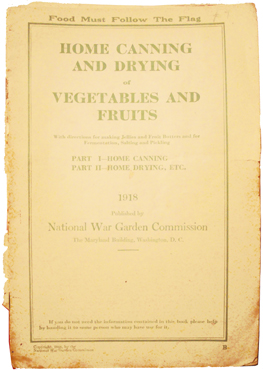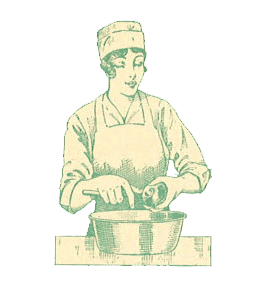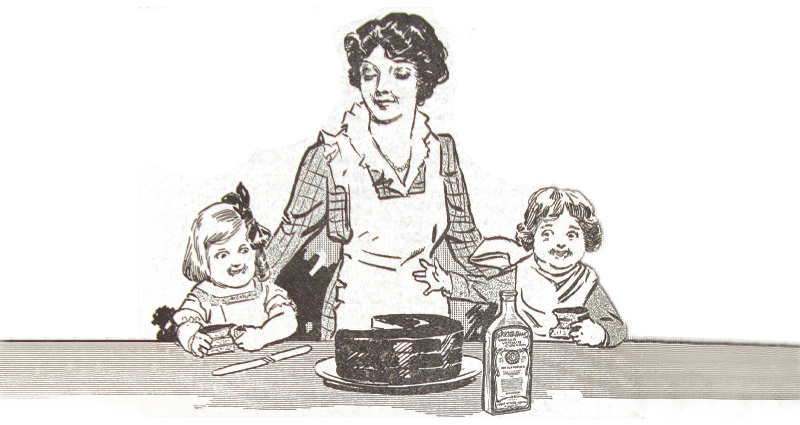1918: Home Canning and Drying of Vegetables and Fruits, with directions for making Jellies and Fruit Butters and for Fermentation, Salting and Pickling.
Part I–Home Canning,
Part II–Home Drying, etc.
National War Garden Commission
From the booklet:
“To save vegetables and fruits by canning this year is a patriotic duty. The war makes the need for Food Conservation more imperative than at any time in history….The American family can do nothing more helpful in this emergency than to Can All Food That Can be Canned.
“…canning may be done in the kitchen or out of doors. It may be done in the individual household or by groups of families. Community canning is important in that it makes possible the use of the best equipment at small individual outlay and induces Food Conservation on a large scale. Community canning by school children, under the direction of competent teachers, is especially valuable.
Community Work
One of the best methods to follow in canning and drying operations is for several families to club together for the work. The work may be carried on at a schoolhouse, in a vacant storeroom, at the home of one of the members or at some other convenient and central location where heat and water can be made available….
For a co-operative enterprise it is well to have a committee of from three to five to take charge of all details. First determine how many people will take part in the work, how much each proposes to can or dry, what vegetables and fruits each will furnish and such other information as will have a bearing on the selection of equipment. After deciding how much money will be needed have each member contribute his or her proportion, determined by the amount of canning or drying he or she proposes to do….
The equipment may be used by the individual members, on a schedule arranged by the committee, or a working force may be appointed to do all the work, receiving pay in the form of a percentage of the product.
Publicity is important in keeping interest aroused and there should be a committee to arrange with the local papers for the publication of information concerning the enterprise. This serves as an incentive to others.
Sterilization of Food
The scientist has proven that food decay is caused by microorganisms, classed as bacteria, yeast and molds. Success in canning necessitates the destruction of these organisms. A temperature of 160 to 190 F degrees will kill yeasts and molds. Bacteria are destroyed at a temperature of 212 F. held for the proper length of time. The destruction of these organisms by heat is called sterilization…. It must not be forgotten that success in canning demands careful attention to every detail. No step should be slighted. Follow one set of instructions closely and do not attempt to combine two, no matter how good both of them may be.
A Word as to Botulism
Expert research workers of the National War Garden Commission and the United States Department of Agriculture agree that there is no danger of botulism from eating vegetables which have ben canned by carefully following the directions issued by the Commission or the Department. CARE MUST BE TAKEN, HOWEVER, TO FOLLOW DIRECTIONS EXPLICITLY. Cooking canned vegetables for 10 minutes at the boiling point after opening the jar for use will remove an possible danger. This applies also to Apricots and Pears.




